LOTFEEDERS, live exporters and backgrounders are looking for a beast that services all markets well – an easy on the eye, quick maturing animal with a black coat.
This is why Colin and Karen Henke, “Lakala”, Mumbannar, Victoria, have Angus cattle grazing their 1000 hectare property near Mount Gambier, where lush pasture is aplenty.
The Henke family have about 1000 European Union (EU) accredited and JBS Great Southern pasture assured cows and 300 heifers, all calving in the spring.
A seven week joining period means all calves are on the ground within six weeks, and allows cows to have two full cycles and first calvers to get in three cycles.
They then get ultrasound pregnancy tested five and half weeks after the bull is removed, which allows empties to be culled as quickly as possible.
The conception rate in Mr Henke’s herd is between 70 per cent and 85pc for heifers, and between 93pc and 95pc for cows.
Heifers must weigh 320 kilograms before they are joined, and Mr Henke said by the second cycle there shouldn’t be any heifers weighing less than 350kg.
“The heifers are too valuable to let go too soon, and getting the three cycles is very important to their conception,” he said.
“It’s all about over-mating (i.e.ensuring adequate opportunity for conception), knowing your numbers and how effective your joining was.”
Heifers start calving about August 1, and cows start about August 20.
Mr Henke has been using ultrasound pregnancy testing as a management tool for the past six to seven years.
He uses it because it can be done quickly after the bull comes out, and because he can see what stage the foetus was at.
With spring calving, summer gets a bit tight and the calves are normally on their mothers for five months.
Last year, calves were weaned early in December, and received supplement hay high in protein.
“If there’s plenty of grass we don’t wean that early – we know we can do it, we did it in 2006-07 when we had a much drier period,” Mr Henke said.
He said weaning at five months produced extra growth and the Henkes would only wean early in a tight year.
“It’s all about allocating feed to the animals that need it the most,” he said.
Mr Henke said, based on stocking rates, if you ran into a dry patch you had to be ready to destock.
Team Te Mania bulls have been used by the Henke family for the past three years and, previously they used Lawson Angus bulls for 10 years.
Running bulls at a one to 50 ratio or 2.5pc, Mr Henke said he would prefer to have more bulls than not enough.
“If I have 130 cows in one paddock I will run three bulls so it just depends,” he said.
“Team Te Mania enables us to have spares on hand if we need back up bulls.
“If you get caught in a squeeze it’s an insurance policy.”
One of the drawcards to make the shift to Team Te Mania was the female sale held every year, coinciding with the Te Mania bull sale.
“If you have high fertility in your cows, then you are stuck with good quality surplus females,” Mr Henke said.
“It’s counter productive – the Te Mania sale is set up to sell surplus pregnant females in early March along with the bull sale, giving farmers the opportunity not only to sell surplus quality females or buy replacement females, but buy replacement bulls in the one sale.”
When Mr Henke sat down to work out how many bulls he needed on farm, the numbers didn’t add up.
“I worked it out and I needed more bulls than I had, and at the time I was buying the minimum for quite a few years,” he said.
He always bought just enough every year.
“I can buy surplus bulls but it becomes costly.”
“You can’t set yourself up for failure every year, it’s just not economical,” he said.
His neighbour was in the Te Mania program and he saw how it worked for him.
That was the catalyst for change for Mr Henke, as well as the female sale, plus the reputation the product has.
“People have absolute confidence in the product,” he said.
Mr Henke sells his EU-accredited steers to JBS Riverina feedlot, at about the 460kg to 470kg weight range.
The past 10 years haven’t been as good as the previous 10, and Mr Henke has dropped his stocking rates by 10pc and is still just getting through.
His country handles a dry winter but relies on good late winter rain for pasture growth in spring.
“But you just have to manage it,” he said.
Mr Henke bought his property in 1998, buying Angus cattle because they serviced all markets.
“There’s plenty of scope with the Angus breed and it can service every market,” he said.
“With moderate cows you can still turn off progeny that actually target good growth and maturity.”
He has increased his cow numbers over sheep in the past few years.
“Te Mania cattle are one of the leaders in the breed for its bulls as well as the progeny it is turning out with the its program,” he said.
Mr Henke said the Te Mania estimated breeding values had such diversity that he could use them for different purposes depending on the operation.
“They give you plenty of options, and their client base is large and varied – if I wanted to market my cattle differently and go down a different path they would service my needs, he said.
Lakala Cows, PTIC to calve in Spring, to be offered in Team Te Mania Online Commercial Female Sale, on Friday March 5, 2021
Colin Henke, Lakala, Mumbannar.
Photo taken by Kate Pearce, The Land Newspaper





